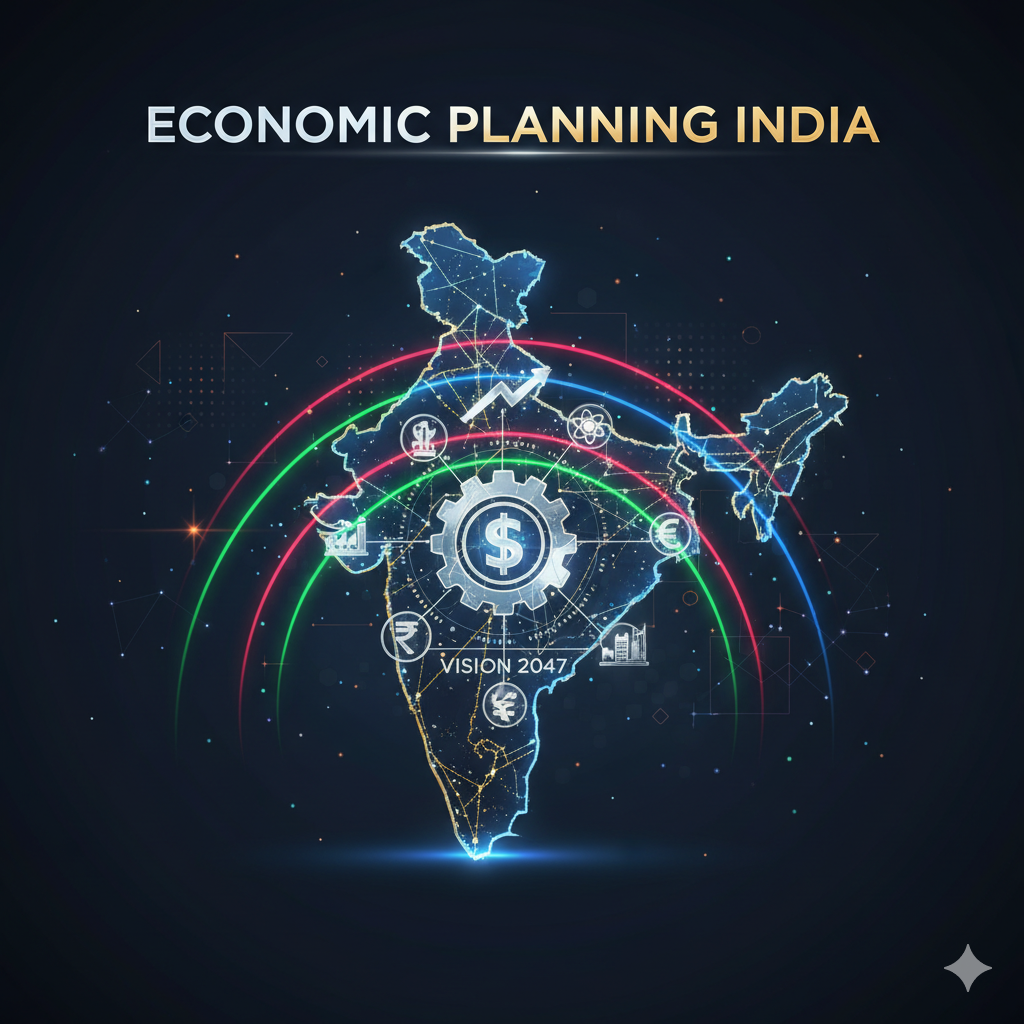Introduction
Monetary policy is a critical component of a country’s macroeconomic management. It involves regulating the money supply, interest rates, and credit availability in the economy to maintain price stability, ensure adequate liquidity, and foster economic growth. In India, the Reserve Bank of India (RBI) is entrusted with the responsibility of formulating and implementing monetary policy. One of its most significant objectives, especially in the post-Inflation Targeting regime, is controlling inflation.
This article explores the tools of monetary policy in India, and critically evaluates the role of the RBI in inflation management, particularly in the context of India’s evolving economic landscape.
Monetary Policy: An Overview
Monetary policy refers to the set of actions undertaken by a nation’s central bank to control the money supply and achieve macroeconomic goals such as:
- Price stability (inflation control)
- Sustainable economic growth
- Exchange rate stability
- Employment generation
- Financial stability
In India, the Monetary Policy Committee (MPC), established under the RBI Act, 1934 (amended in 2016), sets the policy repo rate to maintain the inflation target, currently set at 4% with a tolerance band of ±2%.
Tools of Monetary Policy in India
The RBI uses both quantitative and qualitative tools of monetary policy:
1. Quantitative Tools (General Tools)
These tools affect the overall money supply and are used to control inflation and stimulate growth.
a. Repo Rate
- It is the rate at which the RBI lends short-term funds to commercial banks.
- A higher repo rate makes borrowing costlier, curbing demand and inflation.
- A lower repo rate boosts lending and investment during economic slowdowns.
Example: During COVID-19, RBI reduced the repo rate to a historic low of 4% to boost liquidity.
b. Reverse Repo Rate
- The rate at which RBI borrows funds from commercial banks.
- It helps absorb excess liquidity from the system during inflationary times.
RBI increases reverse repo to encourage banks to park surplus funds and restrict excess lending.
c. Cash Reserve Ratio (CRR)
- The percentage of a bank’s total deposits that must be held with the RBI as reserves.
- Increasing CRR reduces lending capacity and curbs inflationary pressure.
d. Statutory Liquidity Ratio (SLR)
- The portion of deposits that banks must maintain in liquid assets like gold or government securities.
- Used to regulate credit expansion and control inflation.
e. Open Market Operations (OMO)
- Buying and selling of government securities by the RBI in the open market.
- Selling securities reduces liquidity (anti-inflationary), buying adds liquidity (pro-growth).
f. Bank Rate
- The long-term rate at which RBI lends to commercial banks. Used less frequently now.
2. Qualitative Tools (Selective Tools)
These aim at regulating the direction and purpose of credit.
a. Credit Rationing
- RBI instructs banks to limit loans to certain sectors to control speculative lending.
b. Moral Suasion
- RBI uses persuasion or informal means to direct banks to follow prudent credit policies.
c. Margin Requirements
- RBI alters margin requirements for loans to regulate speculative activities, particularly in sectors like stock trading and real estate.
Inflation and Its Challenges in India
Nature of Inflation in India
- Demand-Pull Inflation: Caused by excess demand over supply.
- Cost-Push Inflation: Due to rising production costs (fuel, wages).
- Food and Fuel Volatility: India is sensitive to fluctuations in food and global oil prices.
Recent Inflation Trends
- In 2020, inflation remained above the RBI’s upper band (6%) for several months, largely due to supply disruptions during the pandemic.
- In 2022–23, high inflation was driven by global crude oil prices, food shortages, and global monetary tightening.
RBI’s Role in Controlling Inflation
1. Inflation Targeting Framework
Since 2016, India has adopted a Flexible Inflation Targeting (FIT) regime under which the RBI must keep inflation at 4% (+/- 2%). This has made inflation control the central focus of monetary policy.
Effectiveness:
- Inflation has mostly remained within the band except during extraordinary situations like COVID-19 or the Russia-Ukraine conflict.
- The RBI’s credibility as an inflation-fighter has improved.
2. Using the Repo Rate as a Primary Tool
RBI uses the repo rate to influence borrowing costs:
- During inflationary periods, such as in 2022, RBI raised the repo rate from 4.00% to 6.50% (as of 2023) to curb liquidity.
- During deflationary times, like 2020, it lowered the repo rate to inject liquidity and stimulate demand.
This approach affects:
- Consumption and investment
- Bank lending behavior
- Currency stability
- Inflation expectations
3. Liquidity Adjustment Facility (LAF) and Standing Deposit Facility (SDF)
- RBI uses LAF and SDF to manage day-to-day liquidity and ensure that short-term interest rates remain aligned with the policy rate.
4. Forward Guidance
- RBI often uses communication tools to manage market expectations and signal future policy direction.
- It helps businesses and investors plan accordingly, reducing uncertainty.
Critical Evaluation of RBI’s Performance
Successes
a. Inflation Moderation Post-2016
- From double-digit inflation in 2010-13, RBI managed to bring inflation down to 3-4% by 2017-19.
- Enhanced RBI’s credibility and increased foreign investor confidence.
b. Improved Transparency
- Monetary Policy Committee (MPC) decisions are published with reasons, enhancing accountability.
c. Balancing Growth and Inflation
- During the pandemic, RBI ensured enough liquidity while keeping inflation within tolerable limits.
Limitations and Challenges
a. Limited Impact on Food Inflation
- RBI’s tools are demand-side. But much of India’s inflation is supply-driven (e.g., onion prices, monsoon failure).
- Monetary policy is ineffective in controlling such inflation.
b. Transmission Lag
- Changes in policy rates take time to reflect in bank lending rates and real economic activity due to rigidities in the banking system.
c. Conflict Between Growth and Inflation
- A high repo rate to control inflation can slow down growth and increase unemployment.
- The challenge of balancing price stability and growth is particularly acute during stagflation.
d. External Factors
- Global oil prices, geopolitical conflicts, or imported inflation from developed economies reduce RBI’s control over inflation.
e. Incomplete Policy Transmission
- Despite RBI’s rate cuts, banks may not pass on the benefit fully due to concerns over Non-Performing Assets (NPAs) or capital adequacy norms.
Suggested Reforms for Greater Effectiveness
1. Strengthen Inflation Forecasting
- Invest in advanced data analytics and real-time inflation forecasting models.
2. Enhance Monetary Transmission
- Improve competition and transparency in the banking sector.
- Develop a more market-linked interest rate system.
3. Better Coordination with Fiscal Policy
- RBI must work in tandem with government spending and taxation measures to ensure overall macroeconomic stability.
4. Address Supply-Side Constraints
- While RBI focuses on demand, government policies must address supply bottlenecks in agriculture, logistics, and energy.
5. Expand Financial Inclusion
- Broader access to credit and formal banking improves policy effectiveness across the population.
Conclusion
The Reserve Bank of India plays a pivotal role in India’s macroeconomic stability through its monetary policy tools. Over the years, especially under the inflation-targeting regime, the RBI has made significant progress in controlling inflation and maintaining liquidity.
However, the central bank faces several challenges, including limited control over supply-side inflation, delays in transmission of monetary policy, and external shocks. To enhance the effectiveness of its monetary interventions, the RBI must work closely with the government, adopt sophisticated tools for data analysis, and improve financial sector efficiency.
In a country as diverse and dynamic as India, monetary policy alone cannot ensure economic stability, but it remains a vital lever in managing inflation and fostering long-term, inclusive growth.




